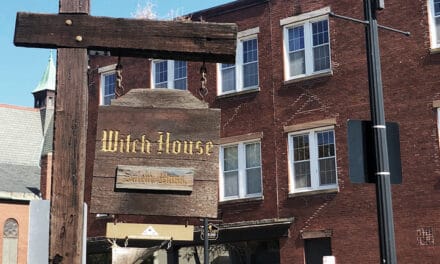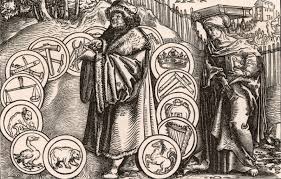This 85th episode of CS, is titled, Dawn.
I want to take a brief moment here at the start to say “Thank you” to all those who’ve spread the word about CS to their friends and family. We’ve had a significant bump in subscribers and lots of new likes on the FB page. So—Kudos to all who’ve spread the word.
As most of you know, iTunes is by far the major portal for podcasts. So, if you use iTunes, a review of CS is a great way to boost our rating – and ratings usually translate into new subscribers. Why do we want more subscribers since there’s no commercial interest in CS? Because information and knowledge about history are crucial to a well-rounded worldview. I’m convinced an accurate view of history is crucial to overcoming prejudice, to tearing down the walls that divide people. That is when we discover not just WHAT people believe but WHY – it helps puts things in perspective and disabuses us of errant opinions.
Anyway, that’s my hope.
As I’ve learned about different groups, I’ve revised my opinions. Traditions almost always have some origin in history, in some ground that at the time seemed perfectly reasonable to the people who created them. We may not agree with them today, hundreds and even thousands of years later, but at least we can respect those who originally framed them; and if not respect, gain a modicum of understanding for the complexities they wrestled with.
Okay, back to it …
We’ve come now to one of the most significant moments in Church History; the Reformation. Since it’s considered by many the point at which the Protestant church arose, it’s important to realize a couple of things.
First – The student of history must remember almost all those who are today counted as the first Protestants were Roman Catholics. When they began the movement that would later be called the Reformation, they didn’t call themselves anything other than Christians of the Western, Roman church. They began as an attempt to bring what they considered to be much-needed reform to the Church, not to start something new, but to return to something true. When the Roman hierarchy excommunicated them, the Reformers considered it less as THEY who were being thrust forth out of the Church as it was those who did the thrusting, pushed them out of the true church which was invisible and not to be equated with the visible religious institution HQ’d in Rome, presided over by the Pope. It’s difficult to say for certain, but you get the sense from the writing of some of the Reformers that they hoped the day would come when the Roman church would recognize in their movement the true Gospel and come to embrace it. Little did they envision how deep and wide the break between them would become, and how their movement would shatter and scatter into so many different sects, just as the Roman hierarchy worried and warned.
Second – There’d been groups that diverged from Roman Catholicism and its Eastern cousin the Orthodox Church, for a long time. We’ve already considered the Nestorian Church which dominated the Church in the Far East for hundreds of years and didn’t lose its place of prominence until the Mongol invasions of the 13th C. There were little communities of what can be called non-aligned Christians scattered throughout Europe. And we’ll consider some of those as we turn now to the Reformation.
Long before Luther nailed his list of 95 topics for discussion to the chapel door at Wittenberg, others had sniped at the theological position of the Roman church. There’d always had been some who didn’t agree with its teaching, and many had broken off into separate religious communities.
By way of review …
Peter Waldo was one of the most effective of the pre-Reformers. A wealthy merchant of Lyons, France, moved by Matthew 19:21, he was convinced that poverty in the service to Christ was the path to heaven. So three centuries before Martin Luther, he sold his estate and gave the proceeds to the poor. Within a year, he was joined by others, both men and women, who called themselves the “Poor Men of Lyons,” and took on an itinerant ministry of preaching repentance and living from handouts. These were an early form of what came to be the mendicant monks.
Thinking themselves to be good Roman Catholics, they appealed to the Third Lateran Council in 1179 for permission to preach but were refused because they were considered ignorant and unlearned laymen. But they were convinced they were like the first followers of Jesus and should obey God rather than men. So, Peter and his followers continued to preach.
In 1184, Pope Lucius III excommunicated them for their disobedience. Contrary to what we might expect, this brought numerous supporters, and the movement spread into southern France, Italy, Spain, the Rhine Valley, and Bohemia. That they gained such support after being drop-kicked by Rome leaves the impression the Church’s reputation wasn’t so grand, at least in the regions where the Waldensians lived and worked.
It’s hard to know if all those called “Waldensian” were really followers of Peter Waldo or if contemporary opponents just used that term as a blanket description for the many disaffected individuals who opposed the Church. It’s possible as well that many smaller groups of non-aligned Christians emerged from hiding to join the Waldensians.
Whatever the case, they took the New Testament as a rule of life and used it in what we might call a legalistic sense. They went about 2 by 2, wearing simple clothing, preaching repentance, frequent fasting, and living from the gifts of others. They rejected the doctrine of purgatory, masses and prayers for the dead, and promoted the necessity for translations of Scripture in people’s native language. They insisted on the right of anyone to preach, man or woman—but they did have some organization among their clergy, with bishops, priests, and deacons.
While Peter Waldo never embraced the doctrines we’d call genuinely evangelical, his emphasis on Scripture as the basis of faith and practice opened the door for his followers to become so.
The Waldensians were persecuted harshly for centuries. Part of the reason for their widespread distribution in Europe was that they were driven from their homeland. In Bohemia, they ultimately became part of the followers of Jan Hus. In their mountain retreat of the Alps between France and Italy, their homeland by the time of the Reformation, they met with representatives of the Swiss Reformation in 1532 and adopted the theology and government of the Swiss Reformers. Then, in 1545, about 4000 were massacred in Provence, France. It wasn’t until 1848 that they won recognition. Today they number about 20,000, the only medieval separatist group to survive to the present.
That brings us to the next pre-reformer, the Englishman JOHN WYCLIFFE, who we’ve already looked at.
John Wycliffe lived about 200 yrs after Peter Waldo. Like Waldo, Wycliffe was determined to derive his theology, both theoretical and practical, from Scripture. Like the Waldensians, Wycliffe encouraged the translation of the Bible into the common language and that anyone ought to be able to preach, not just sanctioned and licensed clergy.
Though he personally translated or supervised the translation of parts of the Bible, the version given his name wasn’t completed until after his death. Its widespread use had an influence on the development of the English language. Wycliffe was educated at Oxford and later became a master of Balliol College there. For a while chaplain to the king, with access to Parliament, he was able to reach some of the upper-class English. But he also sought to reach the common people, sending out lay evangelists to instruct them.
After 1375, Wycliffe’s reforming views developed rapidly. Pope Gregory XI condemned him in 1377 for his efforts, but he was protected by some of the nobles and the powerful John of Gaunt, Duke of Lancaster and son of Edward III. These were the days of the Hundred Years War between England and France, when it was unthinkable an Englishmen would surrender one of their most outstanding countrymen to a pope at Avignon, under the domination of England’s French foes.
To Wycliffe, Scripture, which he interpreted literally, was the sole authority for the believer. Decrees of the pope were not infallible except as based on Scripture. The clergy were not to rule, but to serve and help people. He concluded that Christ and not the pope was the head of the church; in fact, the pope, if he were too eager for worldly power, might even be regarded as the Antichrist. Ultimately, Wycliffe repudiated the entire papal system. He also attacked transubstantiation, the Roman doctrine that the bread and wine of Communion become the actual body and blood of Christ in the Mass. Wycliffe condemned the doctrine of purgatory, the use of relics, pilgrimages, and indulgences. For all this, he’s called the Morningstar of the Reformation.
Wycliffe’s followers were forcefully suppressed in 1401. Those who held his views went underground and helped to prepare the way for the British Reformation a century later. Bohemians studying at Oxford in Wycliffe’s day carried his ideas to their homeland, where they influenced the teachings of Jan Hus, another pre-reformer we’ve already looked at, but whom we’ll consider again now in this set up for the Reformation.
Hus was the professor of philosophy at the University of Prague and lead preacher at Bethlehem Chapel. Historians used to think Hus transported Wycliffe’s views to Prague but it seems clear now that while Hus was later influenced by Wycliffe’s views, his reforms ran tandem to what was happening in England.
Hus’s approach was similar to Wycliffe’s but his influence in Europe was greater than that of the Englishman’s. Luther was greatly impressed with the work of Jan Hus. His greatest work was titled On the Church. He said that all the elect are members of Christ’s church, of which Christ, rather than the pope, is head. He argued against simony, indulgences, and abuses of the mass. He demanded a reform in the lives of clergy, and the right of laymen to take both the bread and wine in Communion.
Hus became the leader of a reform movement that spread across Bohemia. Almost the entire realm supported him, in spite of being excommunicated by the pope. After Hus’s death the reform carried on, and in the middle of the 15th Century the Bohemian Brethren rose out of the embers of the fire Hus lit. They still exist as the Moravians.
The 4th pre-Reformer was Savonarola who lived in Florence, Italy in the late 15th C. He was a fiery preacher against the worldliness and corruption of church and society. A Dominican, he was transferred to the priory of San Marco in 1482 and rose in influence and power in the city. His studies in the OT prophets and the book of Revelation made him a powerful preacher against the evils of a decadent society.
Savonarola served as the spiritual leader of the political party that came to power in Florence when the Medicis fled the city in 1494. Exercising a virtual dictatorship, he tried to reform both the church and state. But over time, the people of Florence found his rule too strict and used his criticism of the Roman Church as the excuse to remove him from office. Pope Alexander VI’s excommunication of Savonarola in 1497 was all the Florentines needed to arrest and try him for sedition and heresy. He was cruelly tortured then hanged in the piazza before the city hall, not far from where Michelangelo’s David would stand just 5 years later.
Although Savonarola demanded reform in the church, he never took the more advanced position of Wycliffe and Hus. He had no quarrel with the teachings or the organization of the church but seems to have believed in justification by faith.
At the same time, Wycliffe and Hus were leading their attempts at reform, a mystical movement flowered in northern Europe. Known as The Brethren of the Common Life, they emphasized Bible reading, meditation, prayer, personal piety, and religious education. The main aim of the Brethren was to secure a revival of practical religion. They gathered in homes rather than monasteries, held property in common, worked to support themselves, and avoided the ill-will of the communities in which they lived by not seeking tax-exempt status or begging. They had good relations with the townspeople but sometimes incurred the suspicion and opposition of the clergy and monks. They attended parish churches and had no peculiar doctrinal positions.
The Brethren were committed to education. They established several schools in the Netherlands and Germany that were outstanding for scholarship and piety. Four of their best-known students were Nicholas of Cusa, Erasmus, Luther, and Thomas à Kempis, who’s credited with writing the widely distributed Imitation of Christ.
Europe was a seething kettle by 1500, ready to boil over. In the realms of economics, politics, education, and religion, the time had come for change. All that was needed was someone who could mold these explosive elements into a single movement. Such a movement could, and eventually would cover Europe.
There are a couple of reasons that need to be stated for why the Reformation succeeded—besides the obvious one many Protestant Christians would note first > It was God’s Will.
The more pedantic reasons are two-fold:
First – The Great Papal Schism had left a bad taste in the mouth of many Christians in Europe. How could the Pope, the Vicar of Christ not be able to keep the Church together? And how could the Pope become such an obvious tool in the hand of secular rulers? The corruption of the Church was so obvious, so blatant, even the most devoted churchmen were embarrassed and wrote impassioned pleas for reform.
And that leads us to the second reason the Reformation occurred; this was the age when the nation-states of Europe were emerging. Kings and regional governors were coming out from under the thumb of the Church hierarchy. Instead of Popes being king-makers, kings made popes. And some kings decided they didn’t want to play Rome’s game at all. They wanted to take their ball and go home to start their own game. If only someone would write some new rules.
Enter: Martin Luther.
In central Europe, the Holy Roman Empire which was essentially a German entity, had an emperor check-mated by numerous states with only slight allegiance to him. Muslim armies knocked at the doors of the empire not long after Luther tacked his theses to the church door at Wittenberg. After toppling Constantinople in 1453, the Ottoman Turks strolled across Eastern Europe until they stood at the gates of Vienna in 1529.
What really happened was this. Charles, a Hapsburg with holdings in central Europe and king of the Netherlands and Spain, was elected in 1519 as Emperor Charles V of the Holy Roman Empire. Francis I of France, surrounded by Charles’ territory and defeated by him in 1525, made an alliance with the Ottomans in 1526 to apply a pincer movement against Charles. The Emperor needed the help of all his German vassals to defeat the Muslims. When some of the German princes became supporters of Luther, Charles was no longer able to put religious pressure on them. If he did, they’d withhold aiding him politically and militarily. So Charles wasn’t able to force Luther’s political covering, the powerful Frederick of Saxony, to surrender Luther when the Pope demanded his head on a pike.
This is all very fun, isn’t it?
Now consider this à Just a few years after Luther’s birth, Columbus reached the New World in 1492 and launched the Spanish Empire in the West. Shortly after Luther posted his theses, Magellan’s expedition sailed around the world. At the same time, the Portuguese were establishing outposts of empire in Brazil, Africa, India, and the Far East.
Did you know Columbus and Luther were contemporaries?
Let’s not forget as well that a whole new world of thought had come in with the tide of the Renaissance. Rediscovering the literature and thoughts of the classical age, contributed to a greater secularization of life.
Humanism was one of the main features of the Renaissance, involving a new emphasis on man and his culture and an effort to make the world a better place in which human beings might live. The pull of the future life was not so great for the true child of the Renaissance as it had been for his ancestors during the Middle Ages. As has been said, the Renaissance man would rather eat his pie now than have it in the sky by and by.
In harkening back to the literature of the Classical Age, humanists put renewed emphasis on the study of Greek and Hebrew in an effort to read the classics in the original languages. The greatest of all ancient documents was the Bible, and the renewed emphasis on ancient languages led many to the Scripture.
The literary humanists included a good deal of biblical study in their academic diet, and it was in the north that the Reformation gained the most headway, among scholars like Zwingli, Calvin, Melanchthon, and Erasmus.
Erasmus was a great satirist of the evils of the institutional church and society. That he got away with it and was so popular proves that criticism of Romanism by Renaissance leaders contributed to the success of the Reformation.
Adding to the effectiveness of the Reformation was the Renaissance spirit of individualism, which paved the way for Luther’s emphasis on the priesthood of the believer and its attendant ideas of the right of believers to go directly to God and to interpret the Scriptures for themselves.
Another important ingredient of the intellectual development of Europe on the eve of the Reformation was the invention of movable type and the spread of printing. Without it the Reformers would not have had the same impact. The tremendous literary activity of the Reformers was largely responsible for building the printing trade.
Lastly, an important phenomenon of the period was the rapid growth of universities, which provided education for a larger number of people, fostered a critical spirit, and provided a means for leaders of the emerging generation to be reached with Reformation principles.
As we end this episode, I wanted to let you know that the donation feature is once more active on the CS site. We had to block it for a while because fraud did a lot of damage. You’ve heard reports of identity theft. It seems once crooks snag a bunch of credit accounts, they check to see if they’re still valid by using sites like CS to post a bogus donation of 1 to $5. If it goes through, they know the accounts good and make real charges. Problem is, EVERY time my account gets one of these bogus donations, the bank charges me a transaction fee. Let’s just say, 10K bogus donations made for a hefty cost to the CS account. So we had to block the donation feature until the proper security could be installed. That’s done now thanks to the excellent work of Dade Ronan at Win at Web. Thanks, Dade. You’re a genius!
So, if you’d be so kind, a donation to keep the site up would be marvelous.





